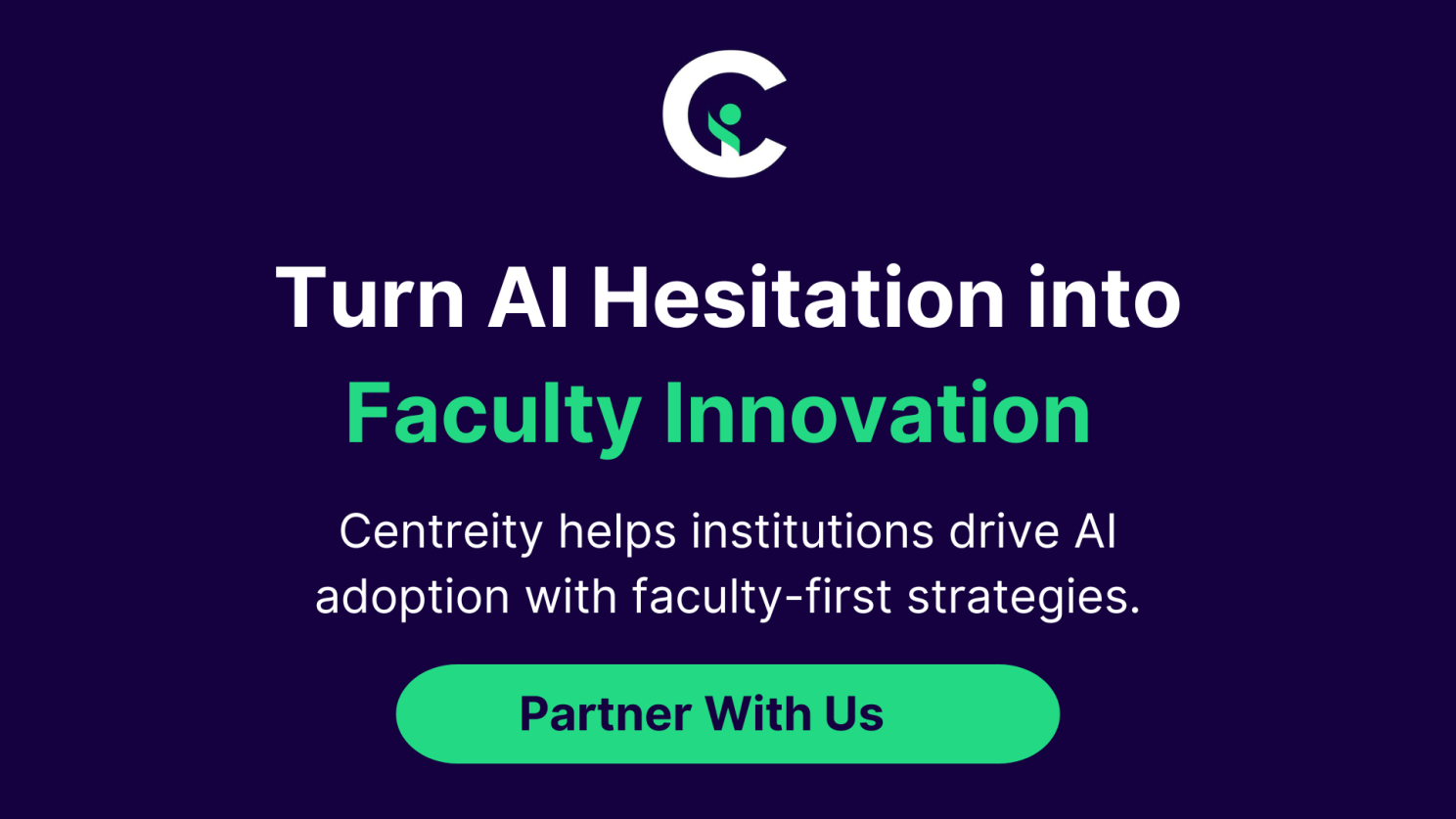At the 2025 AACSB Conference, Dr. Washika Haak-Saheem and I had the opportunity to present on supporting faculty in AI course design—highlighting our work with the University of Dubai and sharing practical strategies for empowering faculty with AI-driven tools.
But what stood out most in our Q&A session was a common pain point echoed by many deans and administrators:
How do we get faculty on board with AI adoption?
It’s not just about training faculty on AI tools or incentivizing participation—it’s about institutional commitment to change.
For faculty, embracing AI in curriculum design, assessment, and instruction isn’t just a simple switch—it’s a fundamental shift in how they approach teaching. And like any major change, it requires time, effort, and a learning curve.
The reality? No one is going to invest in that learning curve if they don’t feel supported.
We often hear that faculty are hesitant to embrace AI because of:
🚧 Uncertainty—Will administration actually support this long term?
🚧 Mistrust—Will AI replace, rather than enhance, faculty roles?
🚧 Lack of time—Will this require more work with little payoff?
These concerns aren’t unfounded. Too often, institutions introduce new initiatives without clear, sustained leadership support, leaving faculty to wonder if their investment in AI will be abandoned with the next strategic pivot.
At Centreity, we believe AI integration isn’t just a faculty issue—it’s an institutional initiative that starts at the top.
Deans, provosts, and academic leaders must do more than encourage faculty adoption—they must:
- Commit to long-term AI integration as part of institutional strategy, not just a short-term experiment.
- Create clear policies and incentives for AI use in curriculum development.
- Provide faculty with ongoing training and thought partnership, rather than just one-time workshops.
- Remove barriers to AI adoption, ensuring tools are accessible, culturally relevant, and easy to implement.
We saw this firsthand in our AI faculty support project with the University of Dubai, where we:
- Conducted hands-on AI training and one-on-one mentoring sessions.
- Provided AI-driven curriculum design tools tailored to faculty needs.
- Ensured faculty felt empowered, not replaced, by AI tools.
The Results
Faculty not only adopted AI but championed its use in their courses, creating richer learning experiences for students.
AI in higher education isn’t going away. Institutions that successfully integrate AI into teaching and learning will be those that:
- Invest in faculty training and mentorship
- Provide clear institutional support and incentives
- Foster a culture of AI as a thought partner, not a replacement
At Centreity, we help institutions build sustainable AI strategies that prioritize faculty support and change management at every level. Because when leadership and faculty are aligned, AI becomes an asset—not an obstacle.


